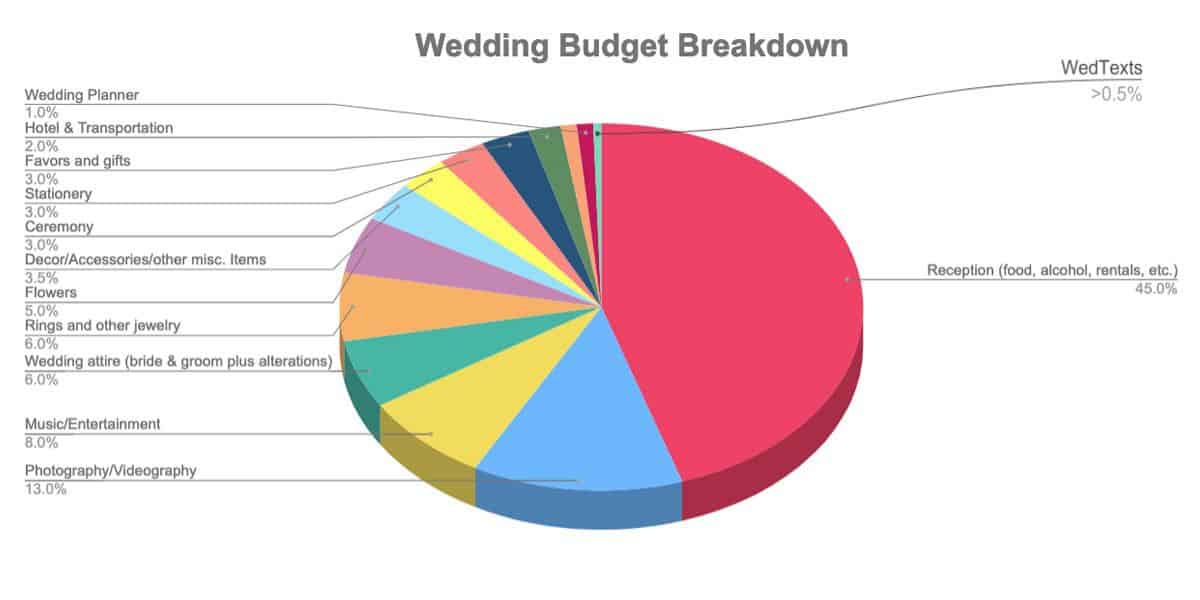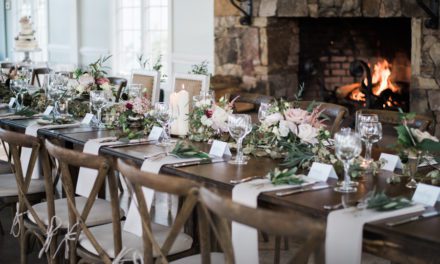Hooray – you’re Engaged!!!
From everyone here at WedTexts, CONGRATULATIONS!!
So, now what?
Friends and family are probably already asking if you’ve set a date. Eek!
If you’re anything like my husband and me, we just wanted to sit in engaged bliss for 5 seconds before starting the wedding planning process.
Let me be the first to tell you that if you’re not ready to jump right into the planning part – that is OKAY!!
But, if you’re like most anxious brides who can’t wait to set every detail in stone, then get to work and have fun.
Our advice?
Start with the budget!
Regardless if the amount is $1,000 or $100,000, you need to decide on a budget. From there, you can plan everything else.
For most of you, this is the first wedding you have ever planned, and there are a lot of items that can sneak up on you. Here is a list of wedding details to consider when starting to plan your budget:
- Ceremony venue
- Reception venue
- Officiant
- Attire
- Flowers
- Music
- Entertainment (photo booths, light shows, caricaturists, etc.)
- Photography
- Videography
- Stationery
- Rings and other jewelry
- Accessories
- Transportation
- Hotels
- Favors
- Welcome Gifts
- Food
- Alcohol
- Rentals (if needed)
- Wedding planner/coordinator (if needed)
As you can see, there are a lot of things that go into your wedding budget (and that does not include the rehearsal dinner or the honeymoon)!
The first step is to determine who will be contributing to the wedding budget.
Have you been saving up for your wedding for years because you knew you’d be paying for it yourself? Or, will one or both sets of parents be chipping in on the total wedding budget?
Decide how much money you and your fiance can put towards your wedding.
Never go into debt to pay for your wedding! Doing so will only make the start of your new life together stressful. Set a limit for what you can afford, and plan according to that amount.
Next, ask your families if they plan to contribute to the wedding fund. If they are, ask how much.
Get exact amounts so that everyone is on the same page.
Add the amount you and your fiance plan to spend to the amounts anyone else is planning to contribute to get your total budget.
Once you have your total, decide what details are most important to you.
Go through the list of details we provided above and select the items that matter to you and your fiance.
If you don’t want a photo booth or are not serving alcohol at your wedding, cross those items off the list. You do not have to budget for them.
When you have your total budget and list of important details, it’s time to calculate what each piece of the wedding will cost.
To help you do this, we’ve provided a percentage breakdown of wedding costs by category:
Use the following percentages as a guideline for how much of your total budget to spend in each category:
- Ceremony – 3%
- Reception (food, alcohol, rentals, etc.) – 45%
- Wedding attire (bride & groom plus alterations) – 6%
- Flowers – 5%
- Music/Entertainment – 8%
- Photography/Videography – 13%
- Stationery – 3%
- Rings and other jewelry – 6%
- Favors and gifts – 3%
- Officiant – 1%
- Decor/Accessories/other misc. Items – 4%
- Hotel & Transportation – 2%
- Wedding Planner – 1%
Multiply your total budget by the
For example, if your total wedding budget is $20,000 and the breakdown gives you 5% to spend on flowers, you’ll have a $1000 budget to give a florist.
$20,000 x 5% (.05) = $1,000
Keep in mind, these are GUIDELINES.
If you crossed out a few of the categories on your personal list, move those percentages to categories you think are more important.
For example, if your ceremony will be at your family church and it is free to use the space, place that 3% in another category. That extra 3% could help you move from a DJ to a live band or upgrade your hotel choice.
Similarly, if you have had your heart set on one specific band that runs over budget, you can book it! BUT, you’ll have to make up for that overage from elsewhere in your budget – by downgrading decor or favors, for example.
Use the percentages to come up with your budget for each category, adjusting based on your personal wedding style.
If math isn’t your thing, use our 10-second Wedding Budget Calculator to see how much you can spend on each part of your wedding.
That’s it!
Simple enough, right?
Now that you’ve got your budget set, here are a few tips to keep in mind as you move on with the wedding planning process:
- Your wedding should be YOURS – try to keep this day as unique and personalized as possible while staying in your budget. Don’t let others influence your decisions too much.
- Stick to the budget – It is easy to get suckered into spending more on your wedding dress than you budgeted when you see all the gorgeous options out there. You made a budget for a reason – use it.
- Tell your consultants or vendors your budget up front – this will help the professionals know exactly what they’re working with and also help you stay on track.
- Have fun – wedding planning can be stressful, but if you stick to the plan you lay for yourself up front, wedding planning should be a lot of fun.
You’re planning a giant party to celebrate starting a new chapter with the love of your life. E
So now that the boring, money-talk part is out of the way…let the real fun begin.
Next step, the guest list.
For help with this, see our Step-by-step Guide for Creating a Wedding Guest List.
Happy Planning!










Thanks for the comment :-D
Will you please help us reach more people with our content by sharing this post with your friends?